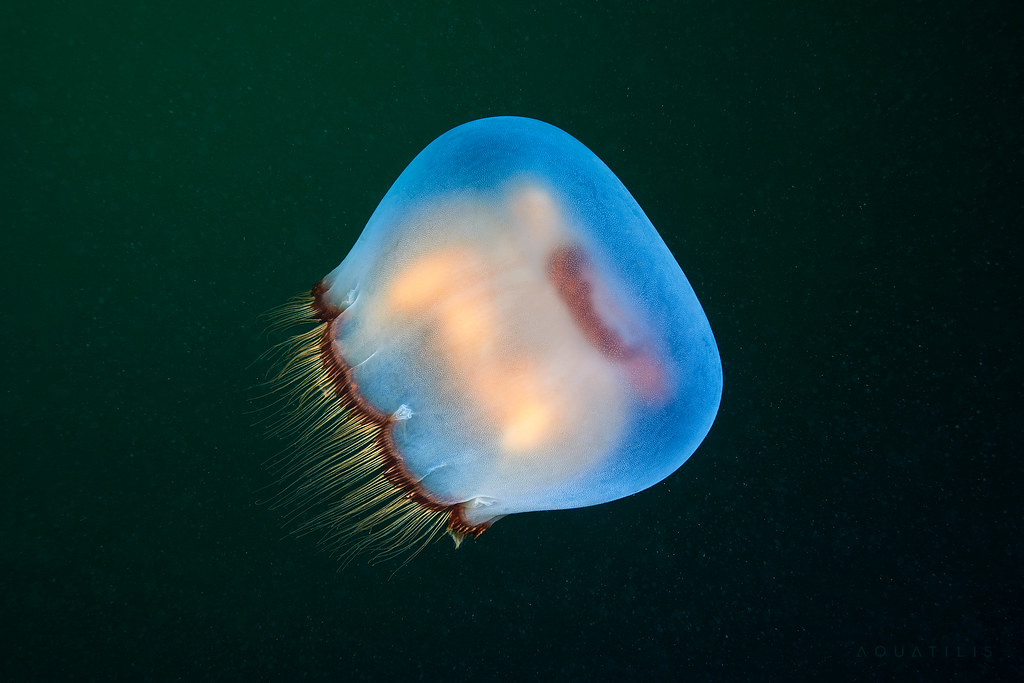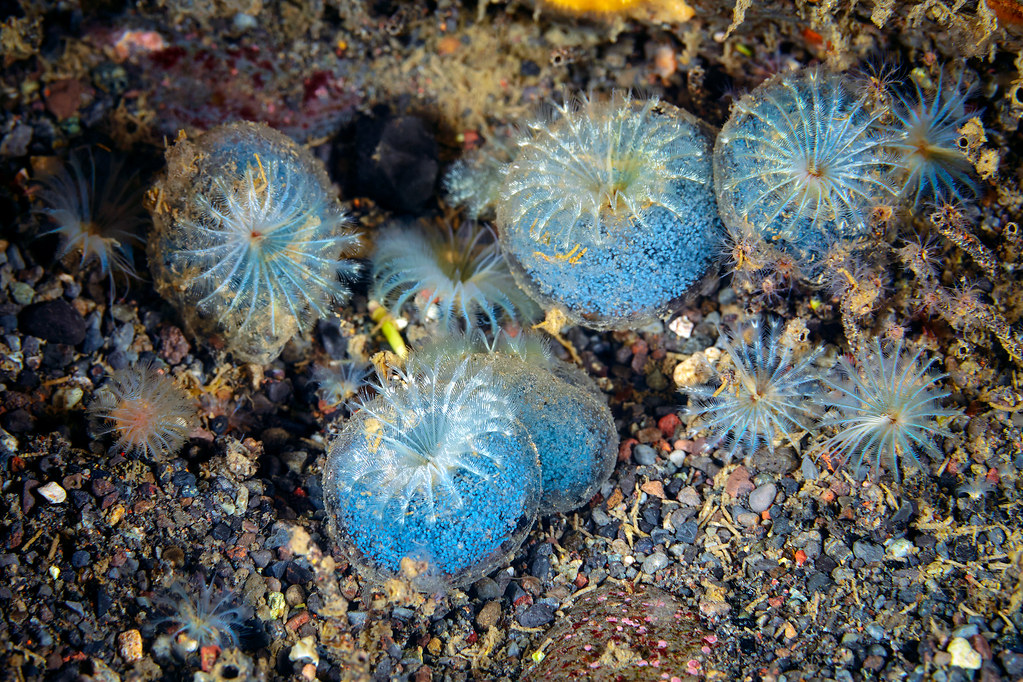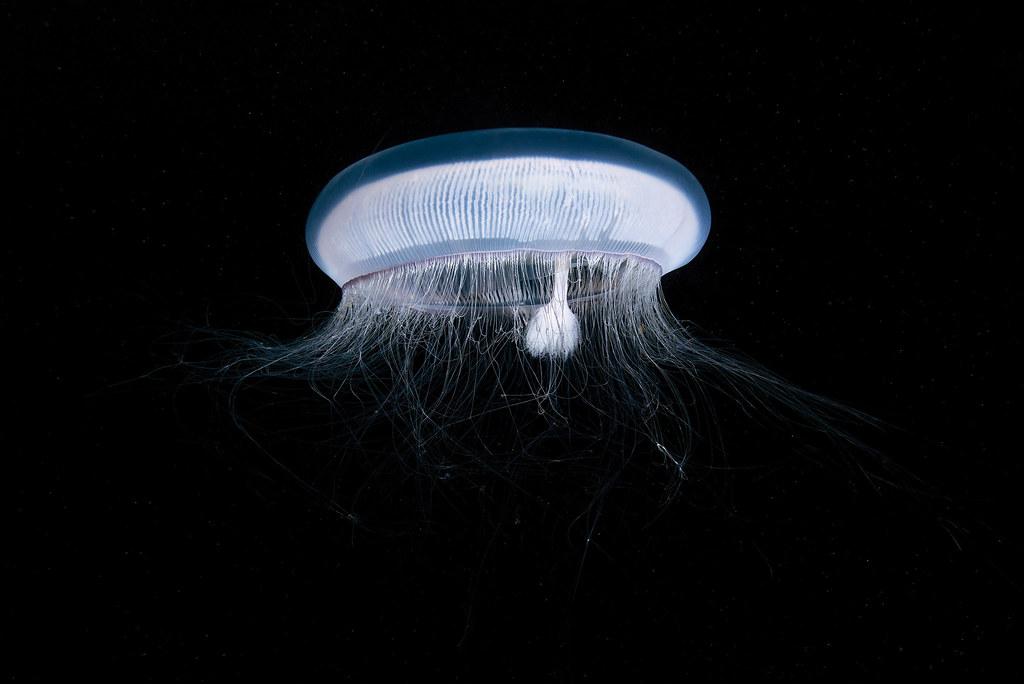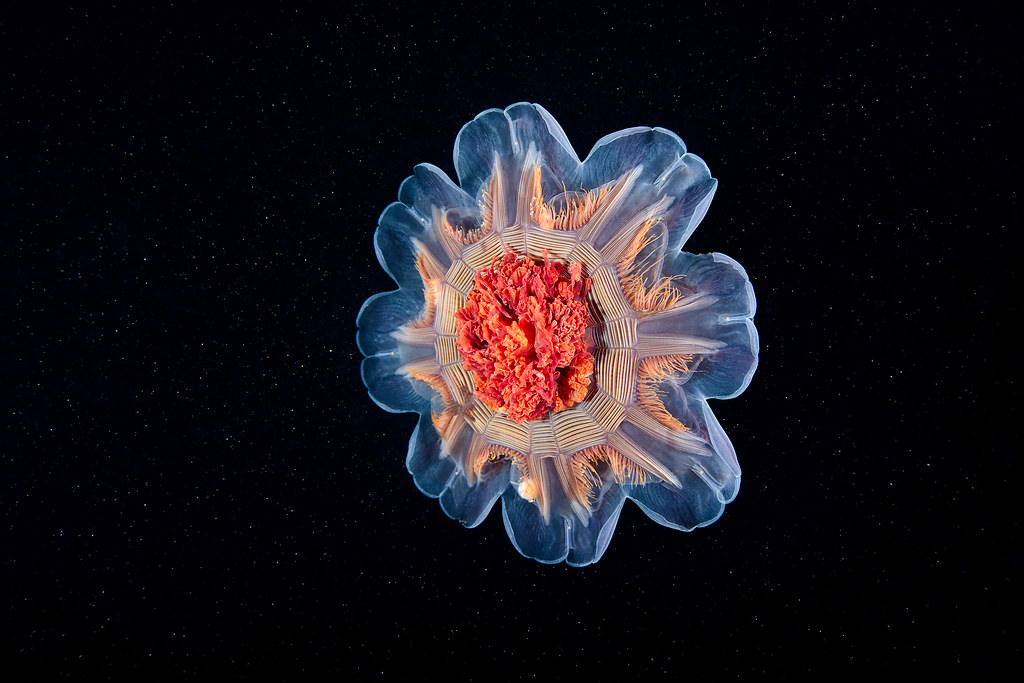#Aquatilis Expedition
Video
Tomopteris sp. by Alexander Semenov
#tomopteris#polychaeta#worm#plankton#planktonic#Aquatilis#Aquatilis Expedition#blackwater#Maldives#night#underwatermacro#macro#under water#flickr#marine life
4 notes
·
View notes
Video
Rhizostoma pulmo by Alexander Semenov
#Rhizostoma#pulmo#barrel#jellyfish#jelly#fish#Aquatilis#Aquatilis Expedition#Mediterranean#sea#under water#underwaterphoto#blackwater#alexander semenov#photographer#nature
54 notes
·
View notes
Video
Bolinopsis infundibulum TIE Fighter by Alexander Semenov
#Bolinopsis#Bolinopsis infundibulum#ctenophora#ctenophore#comb jelly#plankton#Aquatilis#Aquatilis Expedition#white sea
51 notes
·
View notes
Video
Cyanea capillata by Alexander Semenov
7 notes
·
View notes
Photo
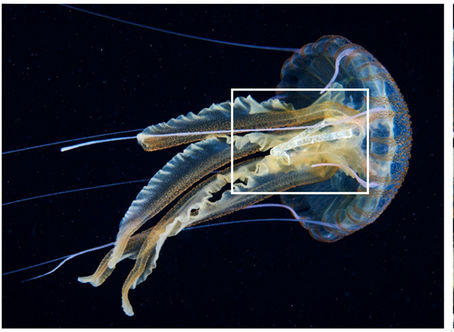
PLASTIC FOUND IN JELLYFISH FIND ITS WAY THROUG FOOD WEB
Plastic debris interacting with marine organism is sadly not a new thing, in fact, researchers believe there is no animal free of this problem. Found in large marine mammals, to small zooplancton, even in larvaceans. Marine pollution expands through the animal kingdom. Thus invertebrates represent the most plentiful component of marine biodiversity. To date, plastic ingestion has been documented for 233 marine vertebrates, however, this list could increase as more research is done.
Now, researchers report for the first time the presence of macroplastic debris in a jellyfish species. Recorded during the Mediterranean campaign of the “AQUATILIS EXPEDITION” on Ponza Island, in the Tyrrhenian Sea, mauve stingers were found along with floating anthropogenic litter of different size, colour, shape and type. No similar observations have been reported so far for jellyfish, although their blooms have been observed in regions of plastic accumulation.
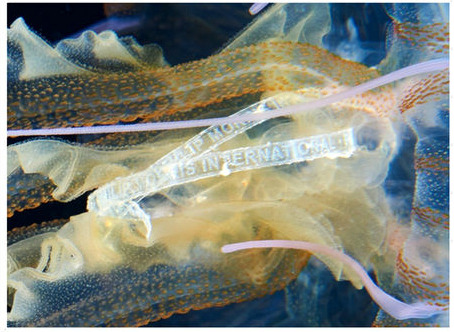
- A swimming mauve stinger (Pelagia noctiluca) observed with a plastic lace of a famous cigarette brand among the oral lobes.
Plastic ingestion is associated with both physical damages such as gut blockage, reduced energy reserves and starvation, and potential toxicity due to persistent, bioaccumulative and toxic substances adsorbed onto the plastic surface .Thus, plastic debris provides a pathway for these chemicals to enter marine ecosystems through plastic ingestion.
With this first approach, researchers believe that jellyfish could act as vector of plastics along marine trophic webs, raising further concern on the impact of plastics on marine organisms. Further studies are urgently needed to understand any potential effect for this species and the real extent of trophic transfer of plastic debris.
Reference: Macali et al., 2018. Episodic records of jellyfish ingestion of plastic items reveal a novel pathway for trophic transference of marine litter Scientific Report.
#plastic debris#marine debris#pelagos#oceans#plastic pollution#cnidaria#jellyfish#Pelagia noctiluca#mauve stinger#animals#biology#marine biology#science#marine science#sciblr#scienceblr#Scyphozoa
577 notes
·
View notes
Text
In order to make the text-only URL not look monotonous, I refer to the layout of many website designs. I tried to blend some elements with the elements of my own design system and drew them.

0 notes
Video
Aurelia limbata by Alexander Semenov
2 notes
·
View notes
Video
Some shrimp on Crossaster papposus by Alexander Semenov
#shrimp#crustacea#crustacean#crossaster#papposus#star#starfish#under water#underwatermacro#underwaterphoto#Aquatilis#Aquatilis Expedition#white sea#flickr#pink#marine life#beauty#magnificent
1 note
·
View note
Video
Chrysaora sp. by Alexander Semenov
#Chrysaora#Aquatilis#Aquatilis Expedition#jellyfish#scyphozoa#sea nettle#northern sea nettle#cnidaria#the Sea of Okhotsk#Pacific#kuril#underwaterphoto#underwater#nature#alexander semenov
51 notes
·
View notes
Video
Sabellid egg balls - Parasabella media (?) by Alexander Semenov
#sabellidae#sabellid#eggs#egg#cocoon#polychaeta#polychaete#worm#Aquatilis#Aquatilis Expedition#under water#underwatermacro#underwaterphoto#parasabella#media#alexander semenov#photographer#nature
22 notes
·
View notes
Video
Aequorea victoria by Alexander Semenov
#Aequorea#victoria#Aquatilis#Aquatilis Expedition#crystal jellyfish#jellyfish#under water#underwaterphoto#alexander semenov#photographer#nature
9 notes
·
View notes
Video
Cyanea capillata by Alexander Semenov
#Cyanea capillata#lions mane#jellyfish#scyphozoa#Cyanea#capillata#Aquatilis#Aquatilis Expedition#under water#underwaterphoto#underwatermacro#white sea#white#sea#nature#alexander semenov#photographer
20 notes
·
View notes
Video
Asterias rubens by Alexander Semenov
#Asterias#rubens#star#starfish#echinodermata#seastar#sea#underwatermacro#underwaterphoto#Aquatilis#Aquatilis Expedition#white sea#common#alexander semenov#photographer#nature
19 notes
·
View notes
Video
Red forest by Alexander Semenov
Via Flickr:
Ah, those boring, lifeless, cold seas.
#Aquatilis#Aquatilis Expedition#kuril#the Sea of Okhotsk#okhotsk#echinodermata#holothurian#forest#sealife#under water#underwatermacro#underwaterphoto#alexander semenov#photographer#nature
10 notes
·
View notes


